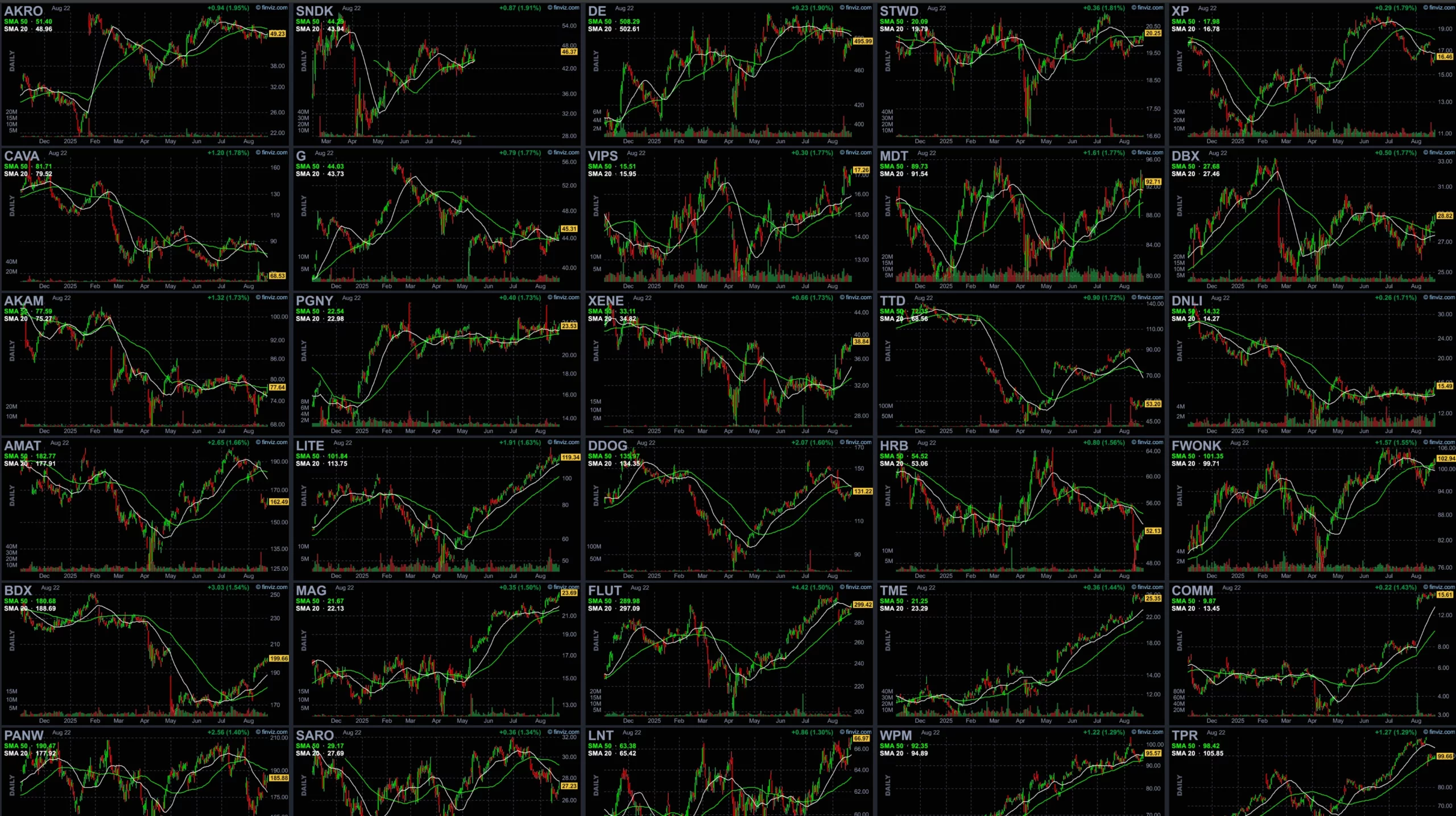I remember starting my trading journey with just $100 in my account. I felt overwhelmed by the countless investment options available. However, penny stocks caught my attention because they offered significant potential returns.
Additionally, these low-priced securities allowed me to diversify my small portfolio effectively.
Trading penny stocks with limited capital requires discipline and strategic thinking. I learned valuable lessons through both wins and losses. Consequently, I want to share these insights to help you navigate this challenging market successfully.

Table of Contents
Understanding Penny Stocks: The Foundation of Smart Trading
Penny stocks typically trade for less than $5 per share. Additionally, these securities often represent smaller companies with limited market capitalization. Furthermore, many penny stocks trade on over-the-counter markets rather than major exchanges.
I discovered that penny stocks attract investors seeking explosive growth potential. However, these securities also carry substantial risks that beginners must understand. Moreover, the low price point allows investors to purchase larger quantities with minimal capital.
The volatility of penny stocks creates both opportunities and dangers. Consequently, I learned to approach each trade with careful preparation. Furthermore, successful penny stock trading requires thorough research and risk management strategies.
Setting Up Your $100 Trading Account: Essential Steps
I started by choosing a broker that offered commission-free trading options. Additionally, I researched platforms that provided comprehensive research tools and educational resources. Furthermore, many brokers now offer fractional share trading for small accounts.
Opening your trading account requires basic personal and financial information. Moreover, you’ll need to fund your account through bank transfers or other methods. Additionally, I recommend starting with paper trading to practice your strategies first.
Consider brokers that offer real-time market data and mobile trading capabilities. Furthermore, look for platforms with low minimum account requirements and educational support. Consequently, your choice of broker significantly impacts your trading success potential.
Research Strategies: Finding Profitable Penny Stock Opportunities
I spend considerable time researching potential penny stock investments before committing capital. Additionally, I analyze company financials, recent news, and market trends affecting each stock. Furthermore, I use multiple sources to verify information and avoid misleading promotions.
Social media platforms often buzz with penny stock recommendations and discussions. However, I learned to distinguish between legitimate analysis and pump-and-dump schemes. Moreover, I verify all information through official company filings and reputable financial websites.
Technical analysis helps me identify optimal entry and exit points for trades. Additionally, I study price charts, volume patterns, and momentum indicators carefully. Furthermore, combining fundamental and technical analysis improves my decision-making process significantly.
Risk Management: Protecting Your Limited Capital
Managing risk becomes crucial when trading with only $100 in capital. Additionally, I never risk more than 10% of my account on any single trade. Furthermore, this approach helps preserve capital during inevitable losing streaks.
Stop-loss orders protect my investments from significant declines in stock prices. I set these orders immediately after entering each position. Consequently, automatic sell orders limit my losses when trades move against me.
Position sizing determines how many shares I purchase for each trade. Additionally, I calculate the appropriate number of shares based on my risk tolerance. Furthermore, proper position sizing prevents any single loss from devastating my small account.
Entry and Exit Strategies: Timing Your Trades Effectively
I developed specific criteria for entering penny stock positions after months of experience. Additionally, I look for stocks breaking above resistance levels with increased volume. Furthermore, I prefer companies with positive news catalysts driving price momentum upward.
Exit strategies prove equally important as entry points for successful trading. Moreover, I set profit targets before entering each trade to maintain discipline. Additionally, I use trailing stop-losses to protect gains while allowing profitable positions to continue rising.
Market timing influences the success of penny stock trades significantly. Consequently, I avoid trading during low-volume periods when prices become unpredictable. Furthermore, I focus on active trading hours when institutional investors participate most heavily.
Building Your First Portfolio: Diversification with Limited Funds
I learned to diversify my $100 portfolio across multiple penny stock positions. Additionally, this approach reduces the impact of any single losing trade. Furthermore, I typically hold between three to five different positions simultaneously.
Sector diversification helps protect against industry-specific downturns affecting multiple related stocks. Moreover, I spread investments across technology, healthcare, and energy sectors when possible. Consequently, this strategy provides better risk-adjusted returns over time.
I track each position’s performance and adjust my portfolio allocation accordingly. Additionally, I rebalance positions when certain stocks outperform others significantly. Furthermore, regular portfolio review helps me identify patterns in my trading performance.
Common Mistakes Beginners Make (And How I Avoided Them)
I initially fell victim to emotional trading decisions rather than logical analysis. Additionally, fear and greed drove many of my early trading choices poorly. However, I developed systematic approaches to overcome these psychological challenges effectively.
Chasing hot stock tips without conducting personal research led to several losses. Moreover, I learned that successful traders develop independent analysis skills. Consequently, I stopped following others’ recommendations without thorough verification and research.
Overtrading became a significant problem during my first few months of trading. Furthermore, excessive trading generated unnecessary fees and increased my risk exposure. Additionally, I learned that patience often produces better results than constant activity.
Advanced Techniques: Scaling Your Success
I gradually incorporated more sophisticated trading techniques as my skills improved. Additionally, I learned about candlestick patterns, support and resistance levels, and volume analysis. Furthermore, these advanced concepts helped me identify higher-probability trading opportunities.
Options strategies can enhance returns when trading penny stocks with proper knowledge. However, I recommend mastering basic stock trading before exploring options contracts. Moreover, options require additional capital and carry increased complexity for beginners.
Swing trading allows me to hold positions for several days or weeks. Additionally, this approach requires less time monitoring charts throughout each trading day. Consequently, swing trading works well for beginners with full-time jobs or other commitments.
Technology Tools: Leveraging Software for Better Results
I use screeners to identify penny stocks meeting my specific trading criteria. Additionally, these tools filter thousands of stocks based on price, volume, and technical indicators. Furthermore, screeners save time and help me focus on the most promising opportunities.
Mobile trading apps allow me to monitor positions and execute trades anywhere. Moreover, push notifications alert me to significant price movements in my holdings. Consequently, mobile technology keeps me connected to markets throughout each trading day.
Charting software provides detailed technical analysis capabilities for better decision-making. Additionally, I use multiple timeframes to analyze short-term and long-term price trends. Furthermore, professional charting tools offer indicators unavailable on basic broker platforms.
Tax Considerations: Understanding Your Trading Obligations
I learned that frequent trading creates short-term capital gains taxed as ordinary income. Additionally, these tax rates typically exceed long-term capital gains rates significantly. Furthermore, keeping detailed records of all transactions becomes essential for accurate reporting.
The wash sale rule prevents claiming losses on securities repurchased within thirty days. Moreover, this regulation complicates tax planning for active penny stock traders. Consequently, I track purchase and sale dates carefully to avoid violations.
Consider consulting a tax professional familiar with active trading strategies and regulations. Additionally, proper tax planning can improve your overall investment returns significantly. Furthermore, understanding tax implications helps you make better trading decisions throughout the year.
Scaling Beyond $100: Growing Your Trading Account
I reinvest profits back into my trading account to compound returns over time.
Additionally, this approach accelerates account growth without requiring additional outside capital. Furthermore, compound growth becomes more powerful as your account balance increases steadily.
Adding small amounts of fresh capital monthly helps accelerate account growth significantly.
Moreover, consistent contributions create more trading opportunities and reduce pressure on individual trades.
Consequently, regular deposits support long-term trading success and account development.
As your account grows, consider graduating to higher-priced stocks with better liquidity. Additionally, larger accounts provide access to more sophisticated trading strategies and tools.
Lastly, increased capital allows for better diversification and risk management strategies.
Frequently Asked Questions
Q: Can I really make money trading penny stocks with only $100?
A: Yes, making money with $100 is possible, but requires discipline and realistic expectations. Additionally, many successful traders started with small accounts and grew them over time. However, you must understand that losses are also possible, and you should never invest money you cannot afford to lose.
Q: How many penny stocks should I buy with my $100 account?
A: I recommend diversifying across 3-5 different penny stock positions to manage risk effectively. Additionally, this approach prevents any single losing trade from devastating your entire account. Furthermore, diversification helps smooth out the volatility inherent in penny stock trading.
Q: What percentage of my account should I risk per trade?
A: I never risk more than 10% of my account balance on any single trade. Moreover, many experienced traders recommend risking only 1-2% per trade for better long-term survival. Consequently, conservative position sizing helps preserve capital during inevitable losing streaks.
Q: How long should I hold penny stock positions?
A: Holding periods depend on your trading strategy and individual stock performance characteristics. Additionally, I typically hold swing trades for several days to weeks. Furthermore, day trades last only minutes to hours, while position trades may extend for months.
Q: Do I need expensive software to trade penny stocks successfully?
A: Basic broker platforms provide sufficient tools for beginning penny stock traders. Additionally, many free screeners and charting websites offer adequate research capabilities. However, advanced software becomes more valuable as your skills and account size grow.
Q: How do I avoid penny stock scams and pump-and-dump schemes?
A: I verify all information through official company filings and reputable financial sources. Additionally, I remain skeptical of unsolicited stock tips and promotional emails. Furthermore, legitimate investment opportunities rarely require high-pressure sales tactics or unrealistic promises.
Q: When should I take profits on winning penny stock trades?
A: I set profit targets before entering each trade to maintain disciplined decision-making.
I often take partial profits at predetermined levels while letting remaining shares run.
Moreover, trailing stop-losses help protect gains while allowing profitable positions to continue rising.
Q: Can I trade penny stocks in my retirement account?
A: Most retirement accounts allow penny stock trading, but check with your broker first.
Additionally, trading in retirement accounts provides tax advantages for frequent traders.
However, some retirement accounts restrict certain types of securities or trading strategies.
Q: What’s the biggest mistake new penny stock traders make?
A: Emotional decision-making represents the most common and costly mistake for beginners.
New traders including college students often risk too much capital on individual trades.
Furthermore, lacking a systematic approach leads to inconsistent results and unnecessary losses.
Q: How much time should I spend researching each penny stock trade?
A: I typically spend 1-2 hours researching each potential penny stock investment thoroughly.
This research includes analyzing company financials, recent news, and technical chart patterns.
Furthermore, thorough preparation significantly improves your chances of making profitable trading decisions.

Hold a Master Degree in Electrical engineering from Texas A&M University.
African born – French Raised and US matured who speak 5 languages.
Active Stock Options Trader and Coach since 2014.
Most Swing Trade weekly Options and Specialize in 10-Baggers !
YouTube Channel: https://www.youtube.com/c/SuccessfulTradings
Other Website: https://237answersblog.com/
